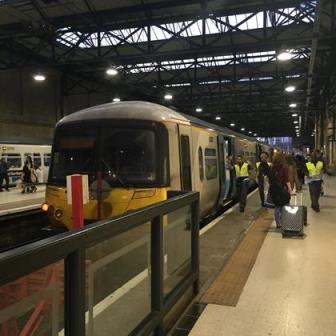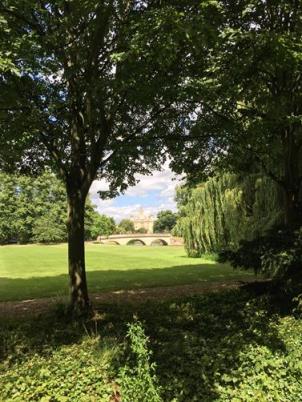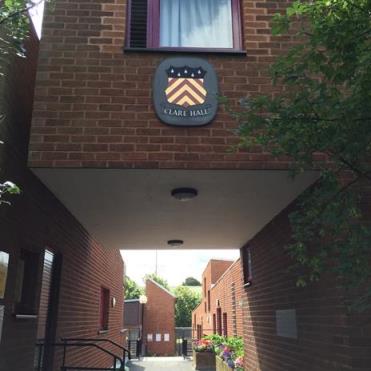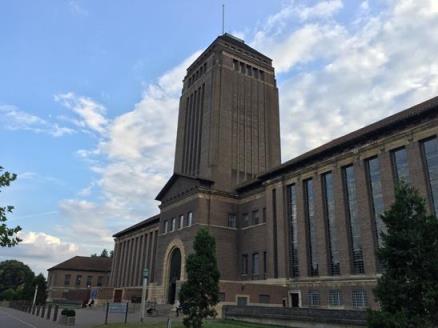- HOME
- About AIS
- Study Abroad Program
- Clare Hall, University of Cambridge Summer Visiting Student Program Report
Clare Hall, University of Cambridge Summer Visiting Student Program Report
2016 Academic Year
Takahito Tanimura: Doctoral Student, Department of Advanced Interdisciplinary Studies, Graduate School of Engineering, The University of Tokyo
Abstract
This summer visiting study is based on the partnership between RCAST, the University of Tokyo and Clare Hall, the University of Cambridge. RCAST provides an opportunity for visiting Clare Hall with maximum four weeks to a few students of RCAST. I had stayed at Cambridge three weeks in August. For the early half of visiting, I spent a time for visiting laboratory at the University of Cambridge, conducting research, and writing manuscript for new research proposal and paper. Later half of my stay was spent for visiting other universities in the UK. The visited laboratories lead my current research topic of Ph.D. study which is on optical fiber communication and networks.
Introduction: a few things on the University of Cambridge
For people who study science, Cambridge would be one of the most romantic places all over the world. The place would remind you of heroes in science history such as Erasmus, Darwin, and Sir Isaac Newton. Although you would not like to restrict old days, we can find other scientific heroes in Cambridge, for example, many researchers including 29 Nobel Laureates at Cavendish Laboratory, who achieved critical works in the field of experimental physics in the first half of the 20th century, Dr. Watson & Dr. Crick with legendary episode of DNA structure model, and Alan Turing in terms of the information engineering.
When you arrive at London from Japan via the Heathrow Airport, first, please go to the London Kings Cross station which is popular place in the Harry Potter's movie. It takes about one hour journey to Cambridge from London Kings Cross by train (Fig. 1). When I arrived at Cambridge in the first time, the impression I had was "rich green city". In fact, comparing to London, Cambridge is very quiet city especially in the backs which is a place at back of the River Cam (Fig. 2). The Cambridge's environment is best for study and conducting research. The quiet environment will make great achievement in the study, but it is a very limited in Japan. Atmosphere of Cambridge made by the historic buildings and field, that our forefathers had also seen, strongly encourages us to respect academic accumulation of mankind and to aim to contribute it, although it might be an illusion. Cambridge is the city where I felt it.

Fig.1: Train at London Kings Cross station

Fig.2: Backs of Queens' College, University of Cambridge
The University of Cambridge is known as the second-oldest university in England and was established since 1209, which is in the day of the Kamakura period in Japan. Today, the University of Cambridge is composed of 31 colleges including Clare Hall (established in 1966, Fig. 3) which I stayed during this summer visiting. The colleges in the University of Cambridge would be one of the mysterious organizations for ordinary Japanese students. During my stay in Clare Hall, I would become familiar with the organization. The following is my personal understanding about the colleges.

Fig. 3: Clare Hall, University of Cambridge
First of all, the question I had was "What is the difference between the colleges and departments?" Of course, there are many academic departments in Cambridge, for example, the department of Engineering. These departments have own buildings which accommodate laboratories for experiment, study rooms for faculty members and students, seminar rooms, and so on. The function of these "departments" might look like a gesellschaft in Germany. On the other hand, the colleges might be a gemeinschaft in my personal understanding. The colleges equip rooms for the life of tutors and students, in principle, all of the tutors and students share daily life. The colleges have the dining room and students and tutors have a lunch and a dinner together. I think this place may provide some of the educational functionality to learn social and intellectual attitude for students. By the way, some colleges have a special eating place for colleges faculty members (so called a high table), but Clare Hall does not have a high table and provide very open atmosphere especially in lunch time. In Clare Hall, lunch includes soup, main, and desert. It is a simple but delicious. Some guys tend to say wrong things about UK's meal, but Clare Hall's meal is actually delicious and I fully enjoyed them. In addition, on the night at every Wednesday, a formal dinner is held in Clare Hall. I can also enjoy the dinner. (Therefore, I would like to recommend bringing your dress or suit to Clare Hall if you obtained a chance to visit Clare Hall.) Also this year is the 50th anniversary year of Clare Hall, and I attended some celebration events held at Clare Hall.
I would like to back to the story of the relationship between the colleges and the departments. The colleges and departments are basically independent organization, and the both of two would be essential part of one university. The both of them are mixed up to make a university. The colleges provide interdisciplinary discussion to learn the intellectual attitude for students. At the same time, the departments offer a learning of professional knowledge and skills. The system composed of the colleges and departments is different from the education system in Japanese universities, but it is no doubt they have successfully achieved great results with this system in recent a few hundred years.
Seminar at laboratories
I had an opportunity to have a seminar to share the study related with my Ph.D. thesis at Dr. S. Savory's laboratory. After the seminar, we had a discussion and tea time. (By the way, the building of department of engineering, at which I had the seminar, is in the area of West Cambridge and near by the Cavendish Laboratory)
On the other day, I visited the laboratory of Prof. D. Simeonidou at the University of Bristol. The city of Bristol is in the west of England and it takes about two hours by train from London. Prof. Simeonidou and her colleagues are conducting wide-range research including the high-speed optical transceivers, software-defined optical networks, and the data center networks. I also visited the laboratory of Prof. J. Tang at Bangor University in Wales. In the laboratory, the study of optical transceivers and related DSP is carried out. I had also seminar and discussion in Bangor.
Study and writing paper
During the rest of the time, I conducted my research and wrote a draft of my paper at the reading room of Clare Hall and at the University Library. Although each college has own library, but the largest one is the University Library (Fig. 4) where is one of the most quiet place in the university.

Fig. 4: The University Library at Cambridge




